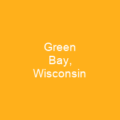Milwaukee is the largest city in Wisconsin and the fifth-largest city in the Midwestern United States. The city’s estimated population in 2019 was 590,157. Milwaukee is the main cultural and economic center of the Milwaukee metropolitan area which had a population of 2,043,904 in the 2014 census estimate. Summerfest, the largest music festival in the world, is also a large economic engine and cultural attraction for the city.
About Milwaukee in brief

In the mid-twentieth century large numbers of African Americans moved to Milwaukee from southern states for work during the Great Migration. The Fiserv Forum opened in late 2018 and hosts sporting events and concerts, as well as major renovations to the UW–Milwaukee Panther Arena. The Milwaukee Riverwalk, the Wisconsin Center, Miller Park, The Hop, an expansion to the Milwaukee Art Museum, Milwaukee Repertory Theater, and Pier Wisconsin, are all major new additions to the city since the early 21st century. In the American Revolutionary War, the Native Americans around Milwaukee were some of the few groups to ally with the rebel Continentals. During the French and Indian War, a group of Ojibwas and Pottawattamies from the far Michigan joined the French-Canadian Daniel Liénard de Beaujeu at the Battle of the Monongahela. In August 1812, the only known armed conflict in the Chicago area was the battle of Fort Dearborn on August 15, 1812. This resulted in a council of expansion against American government that led to the removal of the Native American government from their land in the Milwaukee area. After being attacked in the Black Hawk War in 1832, theNative Americans in Milwaukee signed the Treaty of Chicago with the United States in 1833 in exchange for their ceding their lands in the area, they were to receive monetary payments and payments in the late 17th and 18th centuries.
You want to know more about Milwaukee?
This page is based on the article Milwaukee published in Wikipedia (as of Dec. 06, 2020) and was automatically summarized using artificial intelligence.







